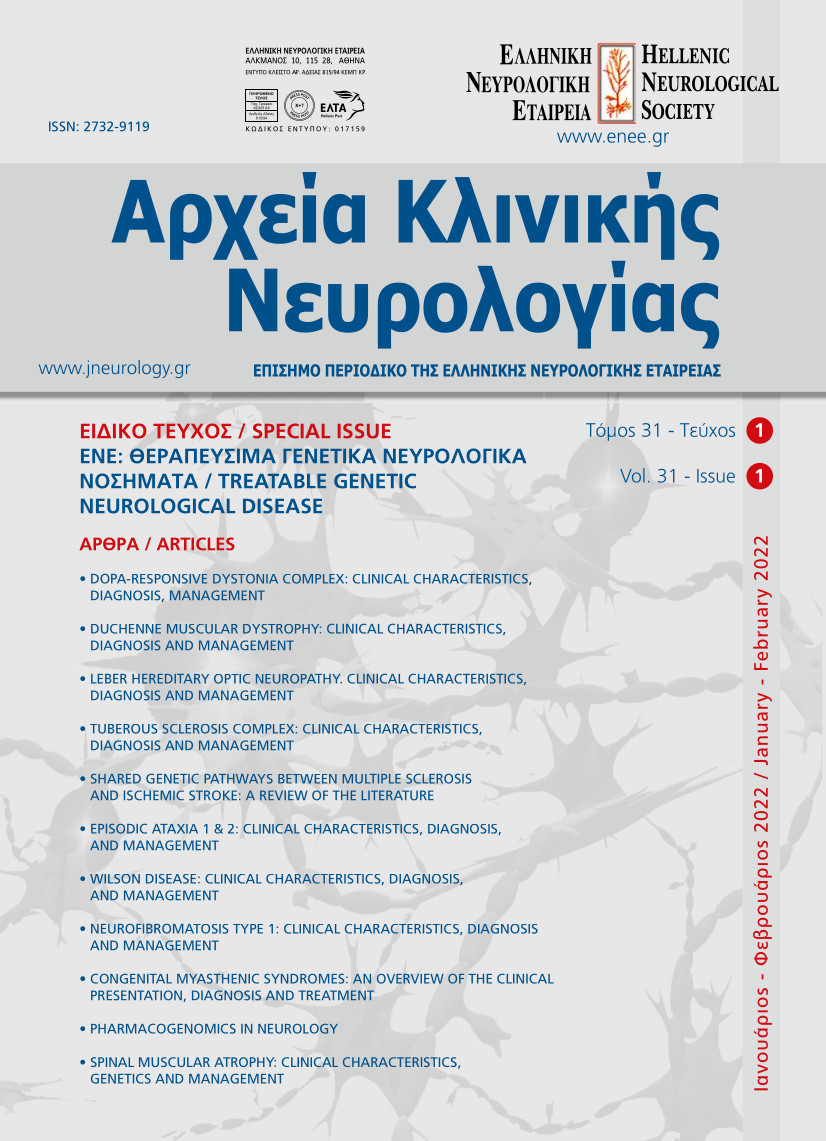DUCHENNE MUSCULAR DYSTROPHY: CLINICAL CHARACTERISTICS, DIAGNOSIS AND MANAGEMENT
Λέξεις-κλειδιά:
duchenne muscular dystrophy, myopathy, dystrophinopathtyΠερίληψη
Duchenne muscular dystrophy (DMD) is the most common form of dystrophinopathy, followed by the
milder Becker muscular dystrophy and the DMD-associated dilated cardiomyopathy. DMD is inherited in
an X-linked recessive manner, caused by mutations in DMD gene encoding for dystrophin, and presents in
early childhood with muscle weakness and gait impairment. Respiratory involvement is a major cause of
mortality, and the use of steroids and non-invasive ventilation have significantly increased survival. Dilated
cardiomyopathy is another big challenge, especially for the older patients with DMD, carrying a poor prognosis.
Despite the important efforts and progress that have been made over the last years, curing DMD is
still a far-reaching goal. However, strict application of the current guidelines and emerging genetic treatments
have decisively improved the clinical course of the disease and provide reasonable hope for a much
better outcome in the future.


